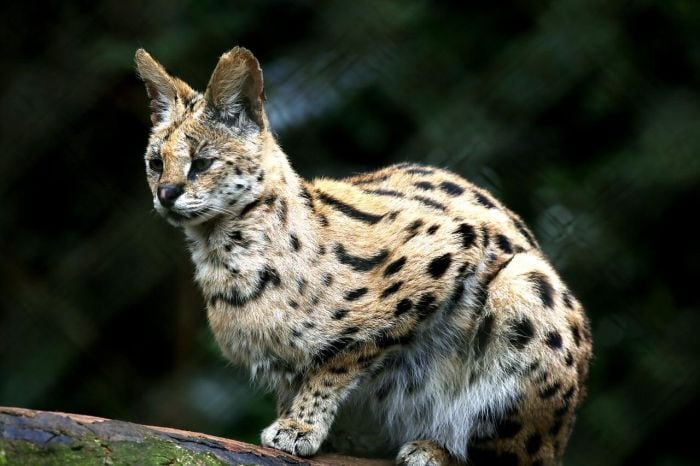
| Animalia | Primates | Cebidae | Saimiri | Saimiri sciureus |


- Common Name: Common Squirrel Monkey
- Taxonomy Classification Year: 1758
- Monkey Size: 25 to 37 cm (9.8 to 14.6 in)
- Skin Color(s): Gray
- Habitat: Forest, rainforest
- Diet: Omnivorous
- Native Countries: Guianas, Venezuela, Brazil
Common Squirrel Monkey Distribution
Guianan Squirrel Monkey Characteristics

The Guianan squirrel monkey[1], also called the South American squirrel monkey, is a squirrel monkey found in Guiana, Brazil, and Venezuela.
- The Guianan squirrel monkeys are about 12.5 inches long (body length), with a tail of around 16 inches.
- They have a slender, agile build, short grayish fur, and bright yellow legs. Their tail often curls over a shoulder when resting.
- These South American monkeys have 36 teeth, and interestingly their teeth are sexually dimorphic as males have large upper canines.
- Guianan squirrel monkeys have fingernails instead of claws and have been called “nervous little primates “. They are the smallest primates of the Cebidae family.
What Do Common Squirrel Monkeys Eat?

The Common Squirrel Monkey nourishes on these food sources[¶]:
- Matchwood (Schefflera morototoni)
- Scarlet Passionflower (Passiflora coccinea).
- Bara (Guatteria longicuspis)
- Seasonvine (Cissus verticillata)
- Black Manwood (Minquartia guianensis).
- Poroto Shimbillo (Inga brachyrhachis).
- Pachiuba (Socratea exorrhiza)
- Amarillo (Guatteria punctata)
- American Muskwood (Guarea guidonia).
- Rabo De Ranton (Casearia aculeata).
- Caucho Rubber (Castilla ulei).
- Cuero De Rana (Laetia procera).
- Chalahuite (Inga acrocephala)
- Maraximbé (Trichilia tuberculata)
- Fig (Ficus)
- Abiu (Pouteria caimito)
- Hogplum (Spondias mombin)
- Icecreambean (Inga edulis)
- Trichilia (Trichilia)
- Breadnut (Brosimum alicastrum)
- Guiana Brosimum (Brosimum guianense).
- Guamo (Inga acreana)
- Figueira-Acreana (Ficus sphenophylla)
- Pacae Colorado (Inga alba).
- Sweetwood (Nectandra membranacea)
- Hinchahuevos (Sapium laurifolium)
- Maripa Palm (Attalea maripa).
What Eats Common Squirrel Monkeys?

Ocelots (Leopardus pardalis) are the main predators of Common Squirrel Monkeys in the wild[§].
Guianan Squirrel Monkey Facts

- Saimiri sciureus was once thought to belong to the Collins’ squirrel monkey and the Humboldt’s squirrel monkey. Still, genetic research in 2009 and 2015 showed they were different species.
- Female squirrel monkeys nurse and groom their young until they are independent. The male species do not participate in the raising of infants.
- They are incredibly agile and sometimes run through the forest on branches.
- Guianan squirrel monkeys exhibit female dominance, with females forming the central core of the troop or group.
- These monkeys are diurnal, and their activities are typically centered around a water source.
Suggested Reading: Monkey Names List
Cite This Page
APA7MLA8Chicago
BioExplorer.net. (2025, December 13). Guianan Squirrel Monkey. Bio Explorer. https://www.bioexplorer.net/animals/mammals/monkeys/guianan-squirrel-monkey/.
BioExplorer.net. "Guianan Squirrel Monkey" Bio Explorer, 13 December 2025, https://www.bioexplorer.net/animals/mammals/monkeys/guianan-squirrel-monkey/.
BioExplorer.net. "Guianan Squirrel Monkey" Bio Explorer, December 13 2025. https://www.bioexplorer.net/animals/mammals/monkeys/guianan-squirrel-monkey/.











